New Film Shows How Art Brings Life to Green-Wood Cemetery
Discover how the living and the dead make Green-Wood Cemetery a vibrant part of NYCs cultural scene!


Welcome back to our regular column on “Must Visit Places” in NYC’s neighborhoods. This installment on Inwood is by Untapped Cities contributor Jeff Reuben, who lives in the neighboring Washington Heights.
For the resident or the visitor, Inwood is a neighborhood for all seasons. Whether it’s canoeing in the summer, hiking in a primeval forest as colors change in the fall, celebrating Christmas in an 18th century farmhouse, or enjoying lively restaurants and bars all year round, there’s always something to check out.
Located north of Washington Heights, Inwood is the northernmost neighborhood on the island of Manhattan. Bounded by Dyckman Street on the south, the Hudson River to the west, the Harlem Ship Canal to the north, and the Harlem River to the east, it is linked to the Bronx mainland by four bridges, two for cars, one for trains, and a double-decker crossing carrying cars below and the subway above. These roads and rails lead to a neighborhood that is both bustling and bucolic. Inwood is a NYC neighborhood like no other — here are 20 spots to see.
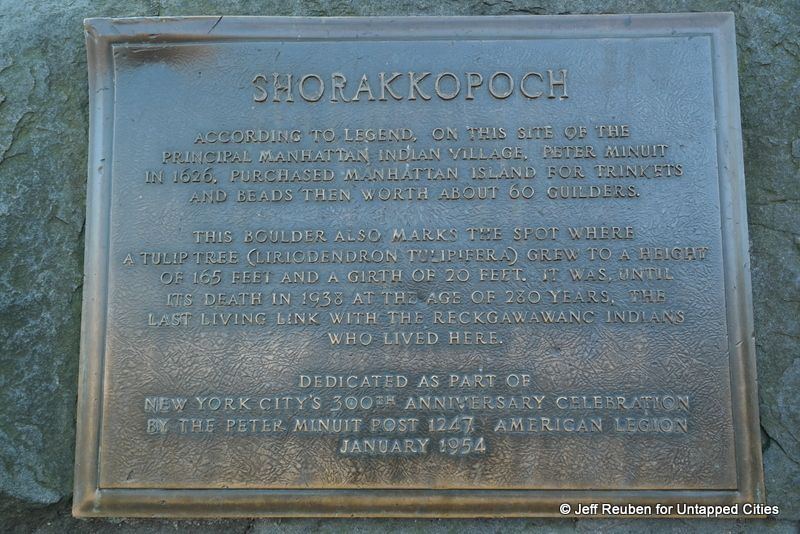
Inwood includes the site of a Lenape village called Shorakkopoch (also spelt “Shorakapkok”), which depending on the source meant “sitting down place,” “edge of the water,” or “in between the hills.” Legend has it — though historians are doubtful — that this was where Peter Minuit purchased Manhattan from the locals for the equivalent of $24 in 1626. Shorakkopoch Rock marks the putative spot of the deal with a historic plaque. The boulder is a remnant of even older history as it was one of many carried to Inwood by glaciers thousands of years ago.
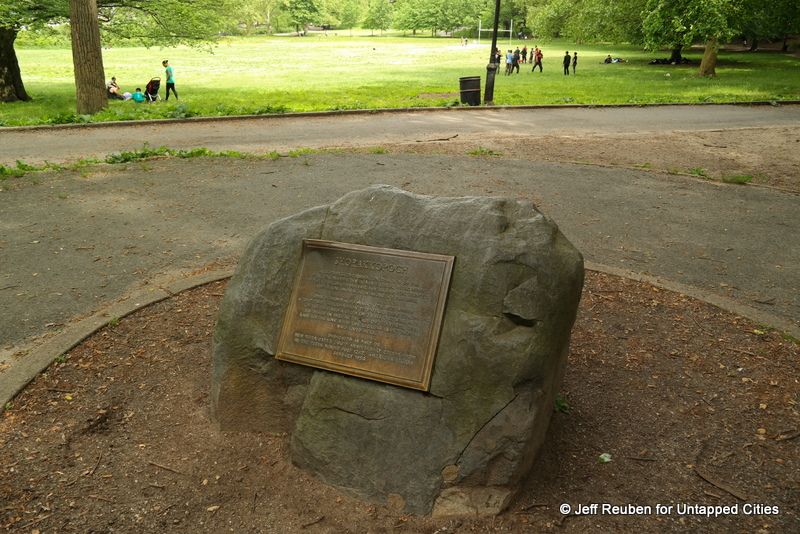
Shorakkopoch Rock is located inside Inwood Hill Park, several hundred feet west of Indian Road and W. 214th Street, southwest of a soccer field. Drums Along the Hudson, an annual one-day festival held in June, celebrates Native American culture and the site’s historic significance.
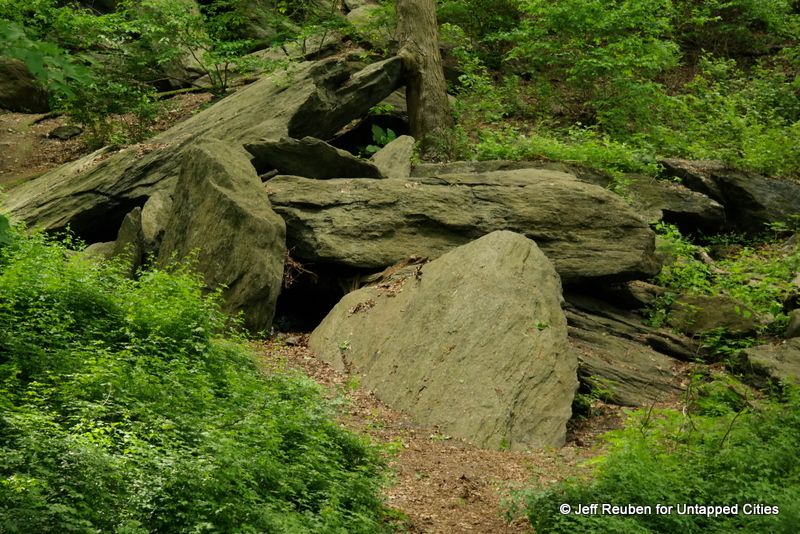
A few minutes walk southwest of Shorakkopoch Rock, “Indian Caves” used as shelter by the Lenape are still present although not marked. However, to call these caves is a misnomer, they are actually recesses among large rock formations dating from the times of the glaciers. They were rediscovered in the late 1800s and early 1900s and archaeological investigations yielded many artifacts of Native activities. Reportedly, local kids found arrowheads there as late as the 1950s.
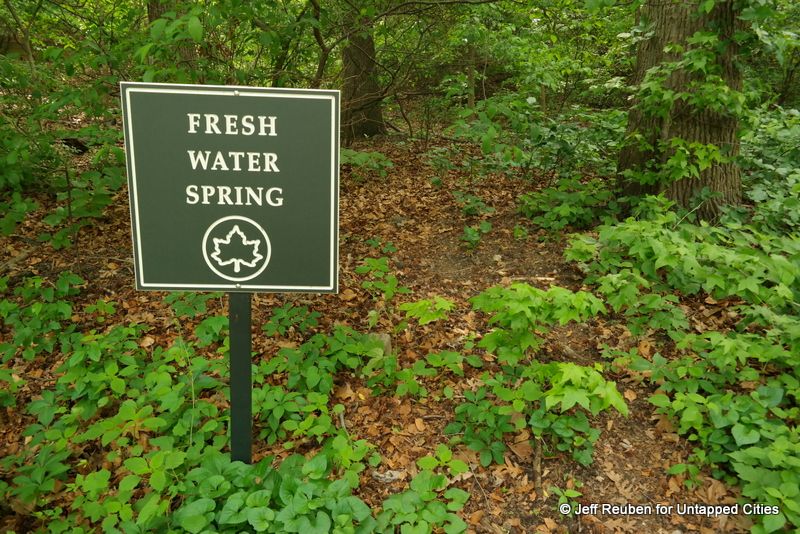
Besides shelter, this area also offered its original inhabitants a natural water spring and proximity to Spuyten Duyvil Creek to the north where fishing provided a food source. While the caves have survived, the setting has not. The creek was substantially altered in the late 1800s and early 1900s to create the Harlem River Ship Canal, which straightened and widened the water connection between the Harlem and Hudson rivers. Other areas once covered by water, including the nearby soccer field, were filled to expand parkland in the 1930s, a legacy of Robert Moses.
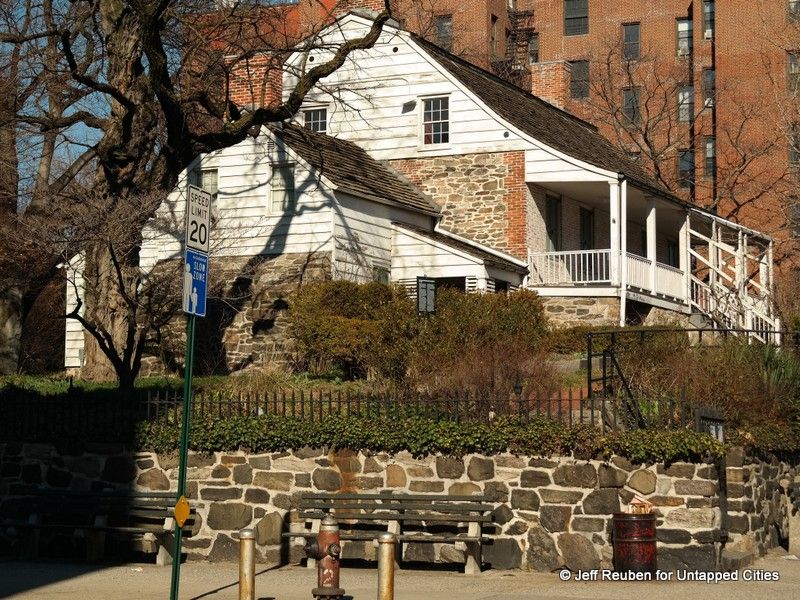
Inwood only has one museum, but it’s a great one. The Dyckman Farmhouse, which was built in 1784, is Manhattan’s last surviving farmhouse. The Dutch Colonial style home was built by William Dyckman who likely was assisted in the task by his slaves who worked the farm and lived with the family for decades. By the early 1900s, with apartment houses and stores having replaced the surrounding fields and barns, the house remained but was in disrepair. Two of Dyckman’s descendants restored it and donated it to the City. It opened as a museum in 1916.
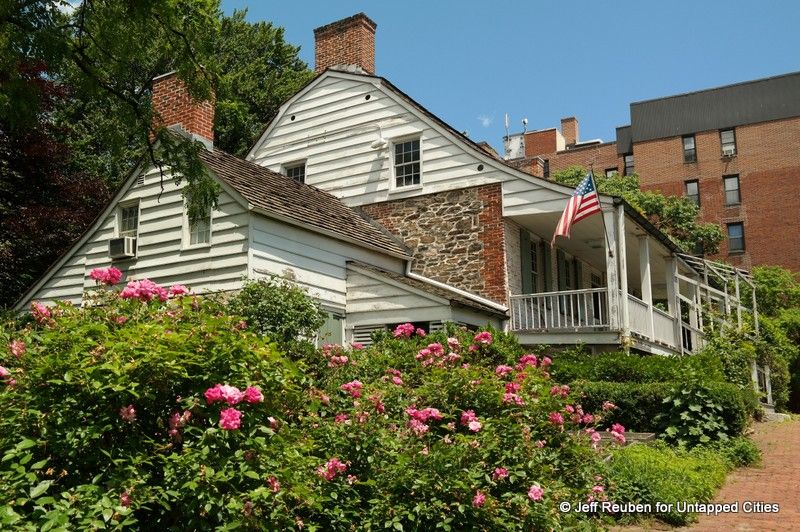
It sits prominently on a small hill above the corner of Broadway and W. 204th Street and retains a small garden as a link to its agricultural origin. Inside, the well preserved landmark is open on Thursdays to Sundays (Fridays and Saturdays from December to March), with donation-based admission, and hosts many events throughout the year. Fun modern fact: it is supported by the Dyckman Farmhouse Alliance, whose members include both a Dyckman family member and craft brewer Juan Camilo, founder of Dyckman Beer Company.
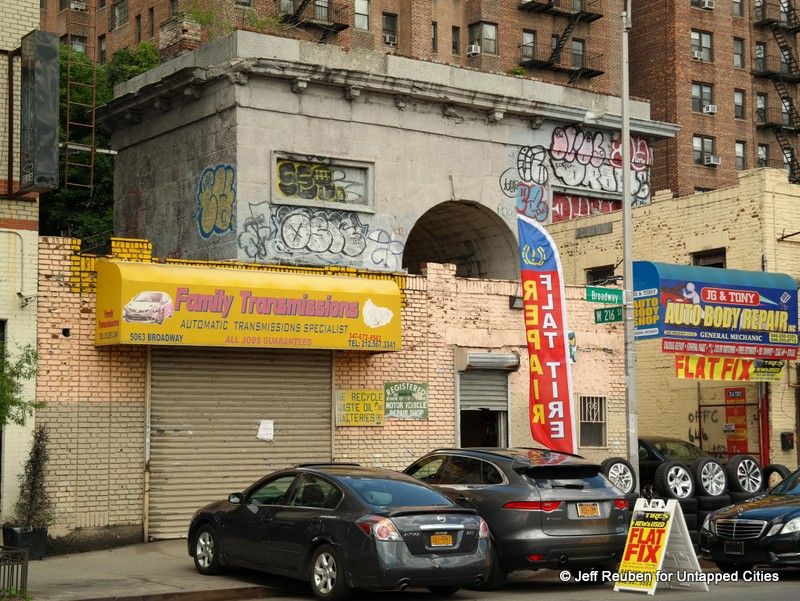
A marble arch that stands incongruously in the midst of an auto body shop at Broadway and W. 216th Street is a vestige of Inwood’s era as a home to mansions. During the 19th century, Inwood gradually transitioned from farms to a preserve of wealthy landowners who joined the Dyckmans and constructed stately homes. One of these was John T. Seaman and his wife, the former Ann Drake, whose estate was reached via a monumental entry arch modeled on Paris’ Arc de Triomphe. The marble was quarried from the site.
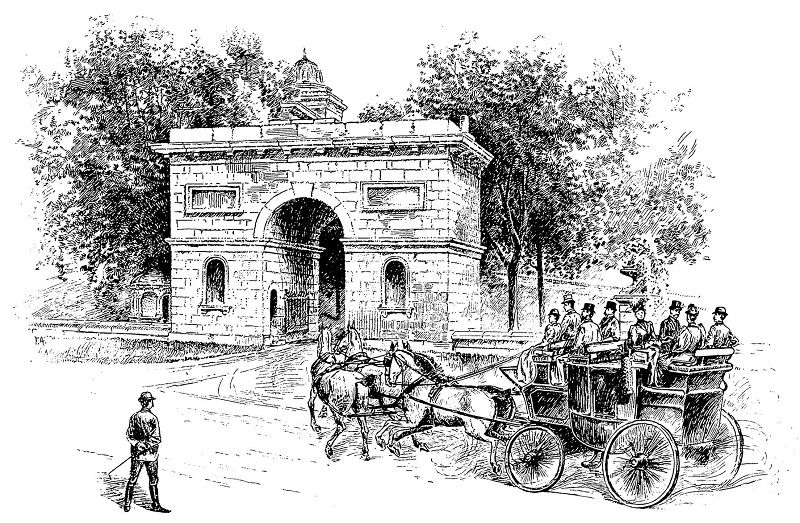
Frank Leslie’s Popular Monthly, November, 1895. In public domain via Hathitrust
The mansion is long gone, but the arch was improbably spared from destruction and over time found itself incorporated into commercial buildings. Now dilapidated and adorned with graffiti, it stands hiding in plain sight. For those who revel in the paradoxes of urban history, the Seaman-Drake Arch is worth a visit even though it only can be viewed from the street.
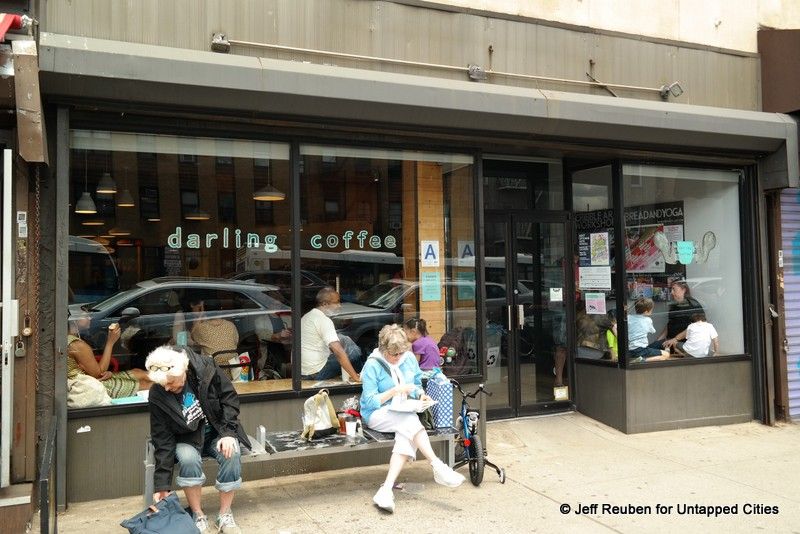
Owned by a local couple, Darling Coffee provides plenty of natural light from large storefront windows and a minimalist decor of warm woods with cool metal trim. The service is attentive and the atmosphere is relaxed, even unhurried, a counterpoint to the active street scenes of Broadway passing by those windows. But the setting, attractive though it is, is just the stage for the real star, namely the high quality and reasonably priced coffee, tea, and food. Likewise, art on the wall and music on the speakers complement the experience but don’t overwhelm.
A recurring theme for Inwood is its duality, with energizing density on one hand and its calming open spaces and waters on the other. Darling Coffee captures both of these; it offers a respite and a recharge.
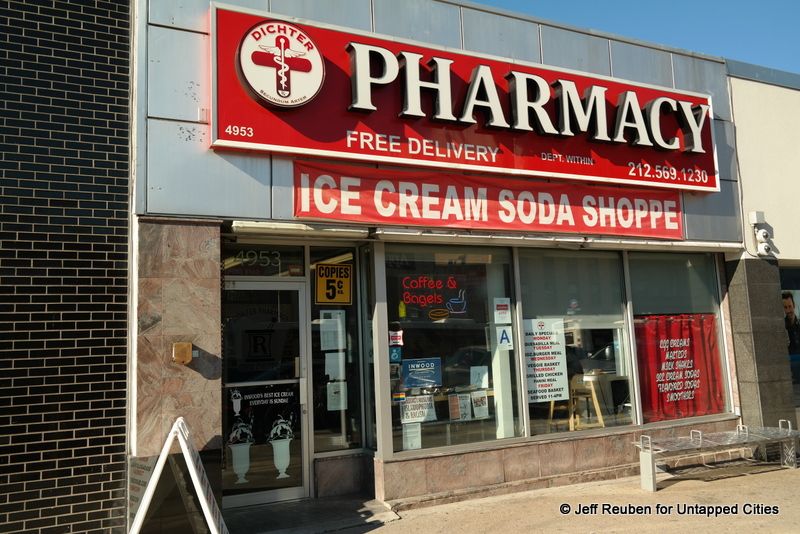
Yes, Dichter Pharmacy is one of our recommended coffee shops. And, no, it’s not an ironic name, this is a fully functioning pharmacy with prescription and over the counter medicines. But, it also offers food, ice cream, an old-school soda fountain, and coffee.
Dichter Pharmacy has strong and long roots in the community. It has served Inwood for decades and its current owner and pharmacist, Manny Ramirez, once worked there as a teenager before buying it several years ago from his former boss.
It has only been in its current location since 2013, located on Broadway down the block from Darling Coffee, after a fire destroyed its previous building. Dichter Pharmacy survived that setback and continues to serve the community, not only as a business but as a resource, for example hosting family friendly string quartet performances.
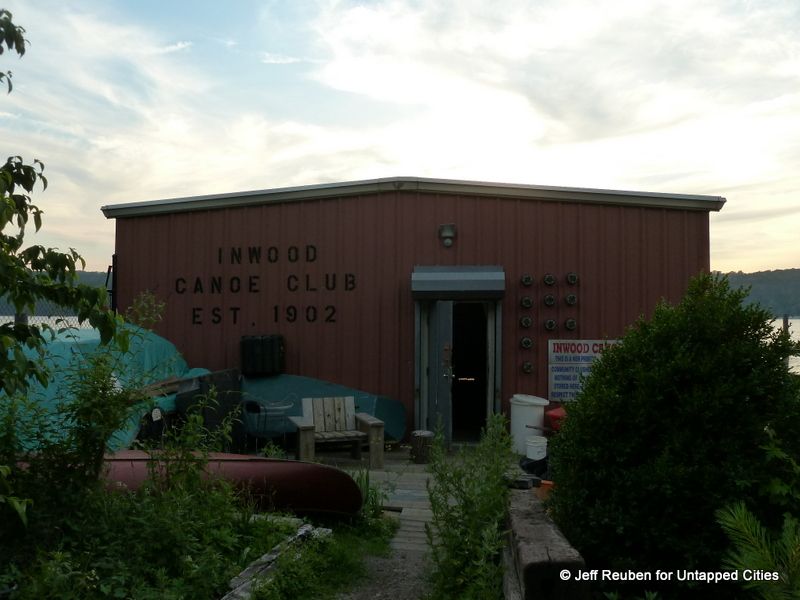
Most of the old rowing clubs are gone, but the Inwood Canoe Club has kept Inwood’s boating culture afloat. Founded in 1902, its boathouse is located on the Hudson River in Fort Washington Park near Dyckman Street. The ICC has evolved from a competitive group that launched the careers of several Olympians to a recreational organization that hosts open houses on Sunday mornings during the summer in which visitors can get out on the water for short trips in a canoe or kayak for a nominal fee. You can become a member to participate in longer voyages.
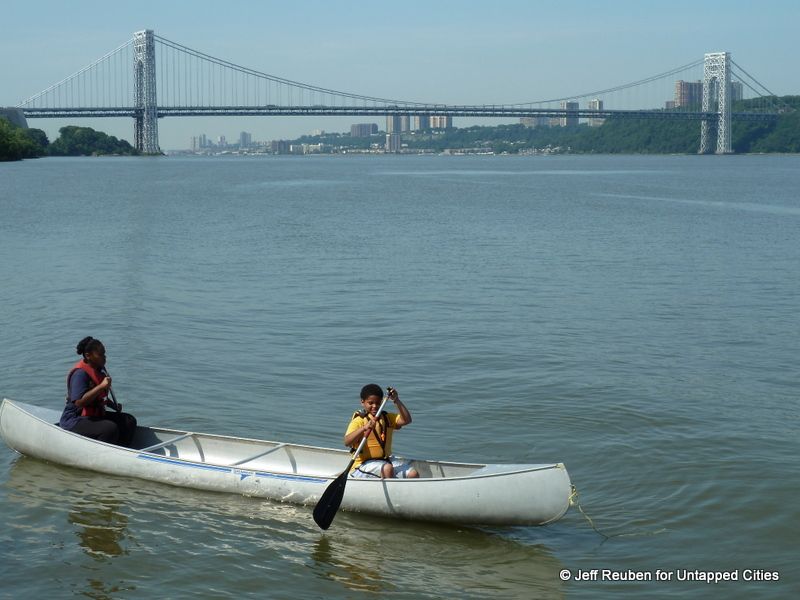
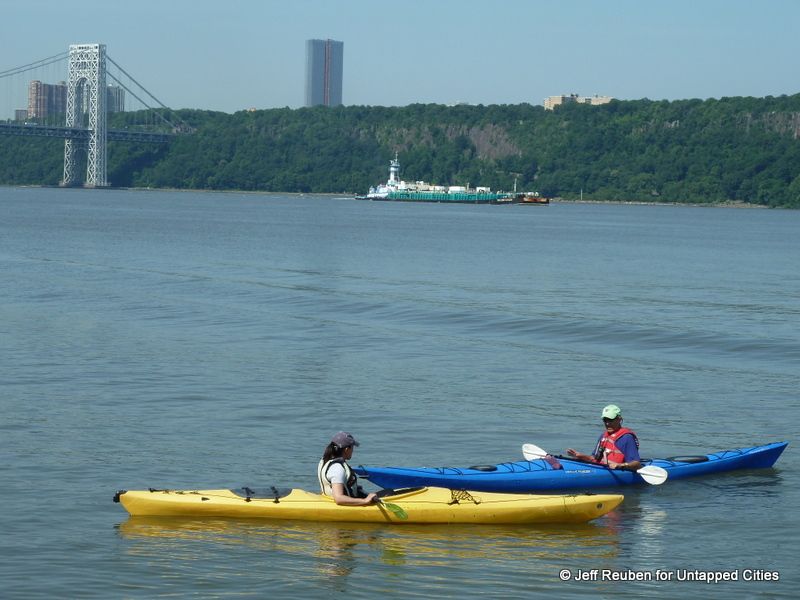
Scenes from Inwood Canoe Club Open House
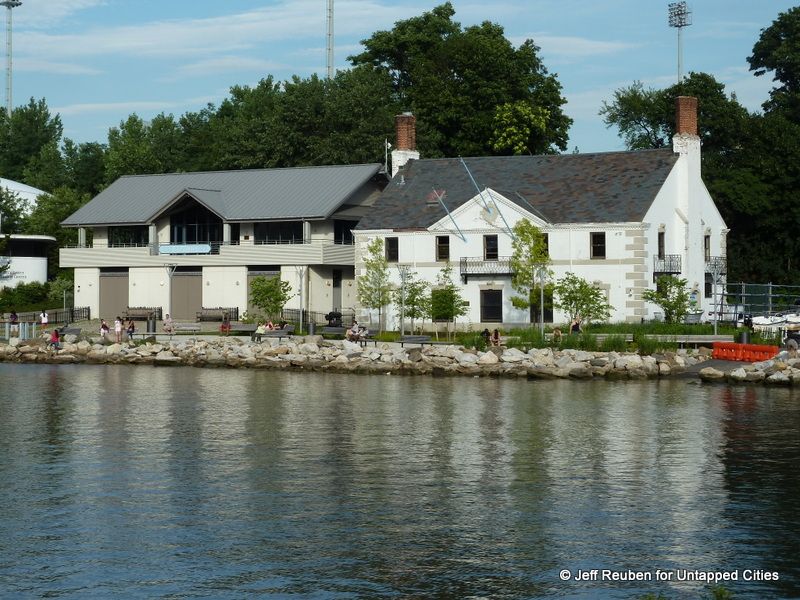
1929 Boathouse and Gould-Remmer Boathouse (Columbia University), Harlem River
Inwood is also the home of Columbia University‘s two boathouses, which are located on the Harlem River Ship Canal, alongside Inwood Hill Park at the north end of the neighborhood. These include the Gould-Remmer Boathouse, built in 1931, a white brick English style clubhouse, and the Class of 1929 Boathouse, completed in 2001. Named for the school’s last rowing team to capture a national championship, 1929 replaced the ’97 Boathouse, paid for by alumni from the class of 1897, which opened in 1922.
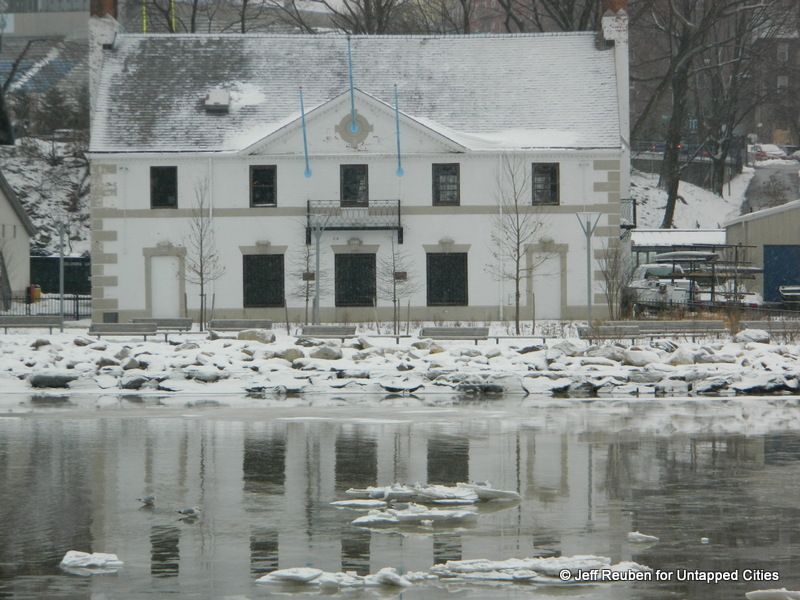
Gould-Remmer Boathouse (Columbia University), Harlem River
Along the Harlem River, Inwood’s newest boating facility, the Peter Jay Sharp Boathouse, opened in 2004. The New York Restoration Project created it as part of a larger crusade to revitalize the Sherman Creek area, which once had been home to several boathouses (check out this 1950s map) but had become an abandoned area with illegal dumping by the late 1990s.
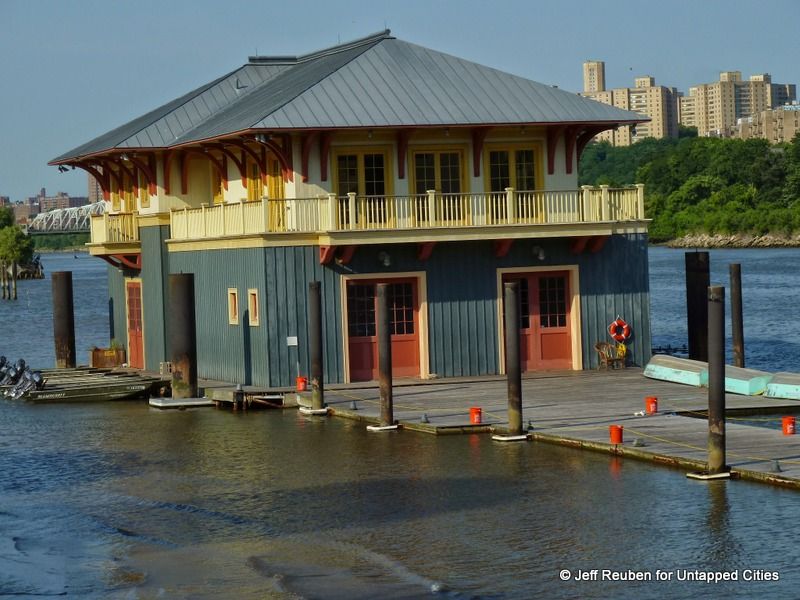
Peter Jay Sharp Boathouse, Sherman Creek
This floating boathouse is used by Row New York, a non-profit which operates programs for local young people and adults, as well as the rowing teams of Fordham University and Manhattan College. It also hosts a variety of boating events throughout the year, such as the Harlem River Youth Regatta.

Harlem River Ship Canal Seen From Inwood Hill Park
Besides human-propelled craft, the waters around Inwood are also populated by all manner of motor-powered vessels, visible from the neighborhood’s parks and bridges.
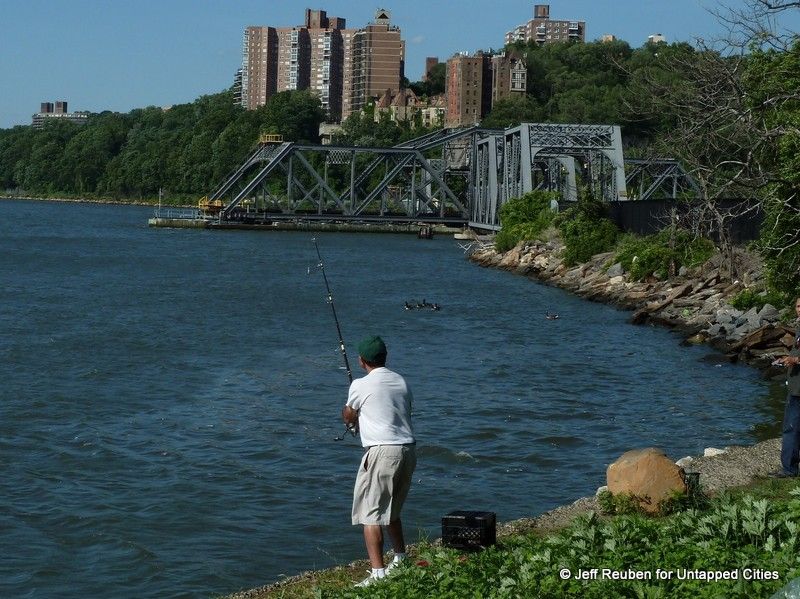
Inwood Hill Park Fishing
Inwood’s dense urban core, with blocks of apartment houses and other buildings, is complemented by extensive parkland that encompasses approximately half of the land area of the neighborhood. The 196-acre Inwood Hill Park is the neighborhood’s back yard and all-purpose recreational and cultural space. We can’t do full justice to this amazing public resource, but we’ll try. Besides the aforementioned Native American historic sites, it provides fields for baseball and soccer, courts for basketball, tennis, and handball, trails for hiking, biking, and running, dog run, picnic areas, and playgrounds. It’s also a waterfront park with shoreline along the Hudson River and Harlem River Ship Canal and an adjoining cove that once formed part of Spuyten Duyvil Creek. It also includes a restored marshland. With all these natural resources, the park attracts wildlife, birdwatchers, and fishers.
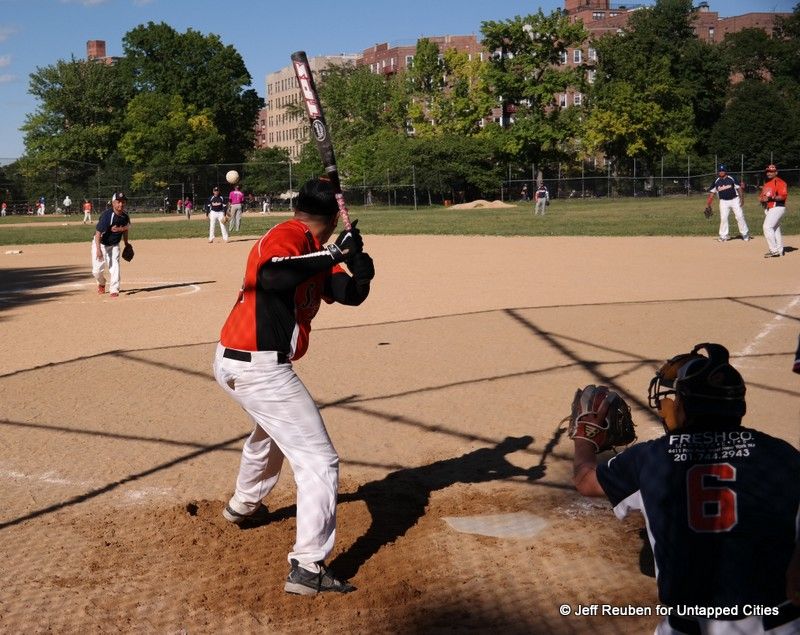
Much of the park’s namesake hill is covered by a forest that has evolved naturally since the times before colonial settlement. The hiking trails on the hill are beautiful but so isolated from the City that visitors may feel more comfortable bringing a companion along for the journey.
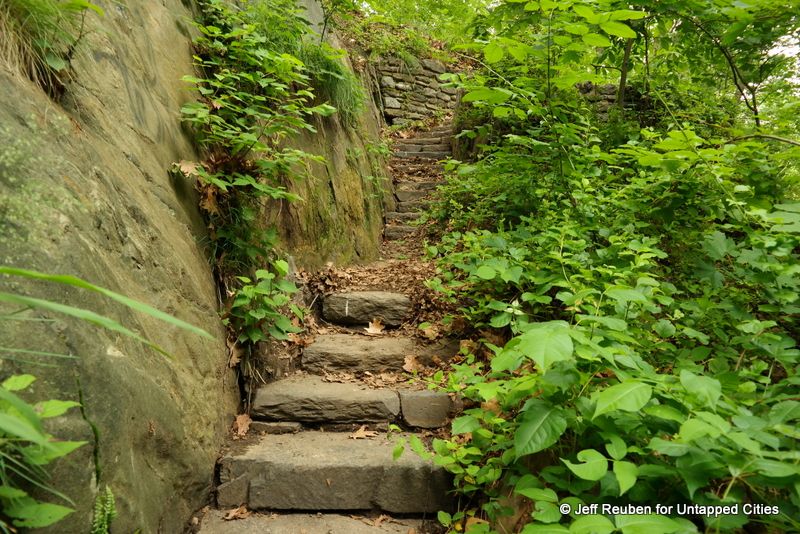 Inwood Hill Park Hiking Trail
Inwood Hill Park Hiking Trail
Inwood Hill Park also hosts a multitude events, including baseball leagues, a volunteer-operated open run on Saturday mornings, and guided nature walks.
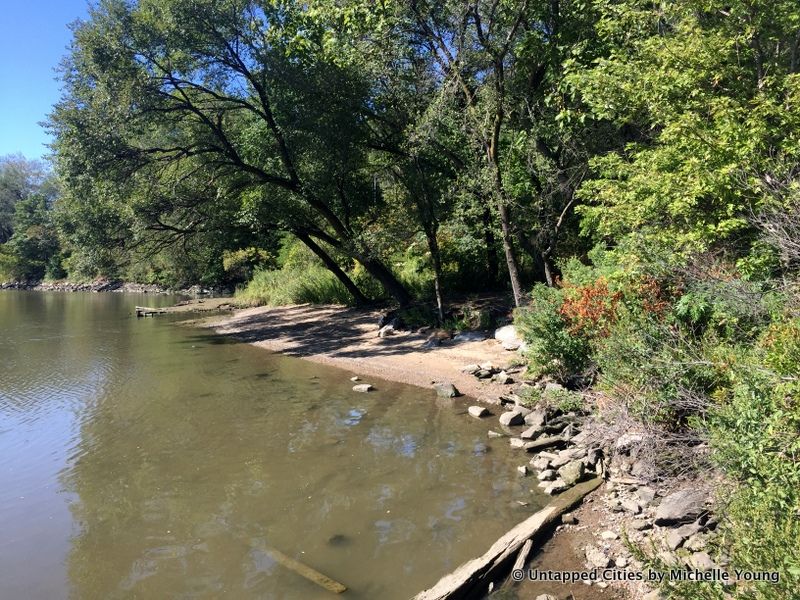
Swindler Cove at Sherman Creek Park is a bit off the beaten path, but more than worth the effort to find. Besides the Peter Jay Sharp Boathouse, visitors can explore its walking paths, children’s community garden, freshwater pond, restored wetlands, and sandy beach. The park is teeming with a range of plants and animals; it’s also known for its bird watching.
We have Bette Midler and her New York Restoration Project to thank for leading efforts over the last two decades to transform this former illegal dumping ground into a green and blue oasis. It is located along the Harlem River east of the junction of Dyckman Street, Tenth Avenue, and the Harlem River Drive, and next to a public school. The closest subway stop is Dyckman Street on the 1 train and it is also accessible by the Harlem River Bike Path.
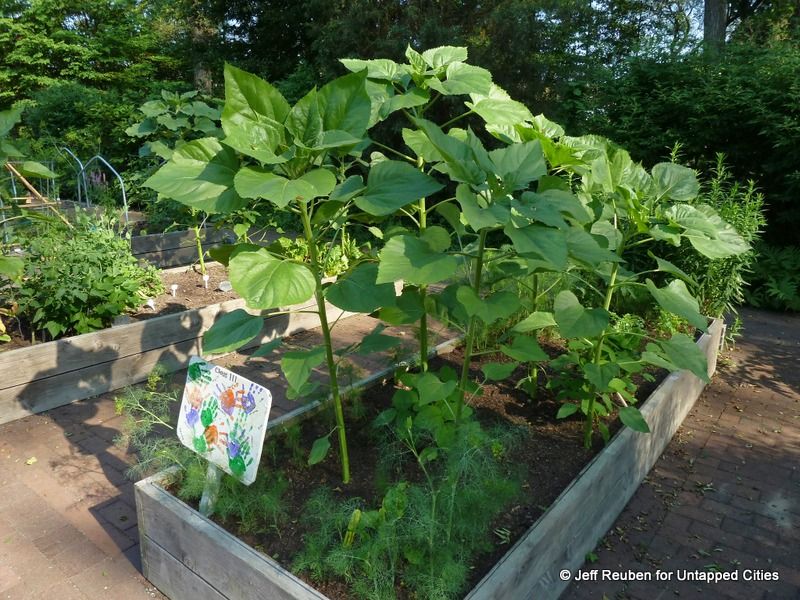
The inspiration for this project came from Billy Swindler, an actor/musician and community gardener who introduced Bette Midler to the site. He died aged 39 from HIV/AIDS in 1997.
New York Restoration Project, which partners with the City, State, various foundations, and community groups, is currently developing a new educational pavilion which will allow for expanded programs to promote environmental stewardship, so that more can follow in Bette’s and Billy’s footsteps.
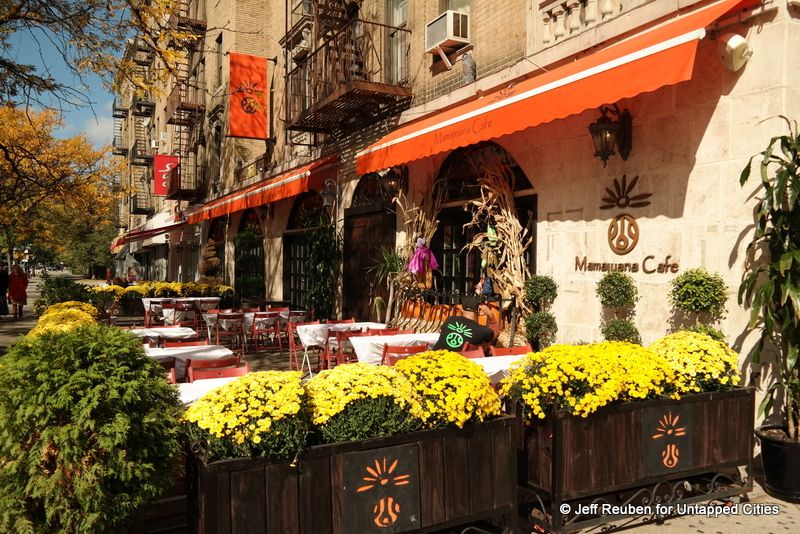
Dyckman Street is Inwood’s only street running river to river, from the Harlem on the east to the Hudson on west. But it is far more than a functional cross-street.
Named for the Dyckman family, today it is probably best known for its restaurants. From a 24-hour place offering mofongo and other Dominican comfort food, to Latin fusion, sushi, Italian, BBQ/smokehouse, and a gastropub, there are plenty of choices. Many of these eateries transform into an active nightlife scene after dinner, prompting some neighbors to complain the street has turned into a noisy “alcohol alley.” At the far west end of the Dyckman Street, on the Hudson is the largest restaurant/club of all—La Marina, which attracts big crowds on summer weekends.
For those looking for a more relaxed vibe, Dyckman Street is not all brick and mortar, food and booze. It also provides access to five major parks — namely Fort Washington, Inwood Hill, Fort Tryon, High Bridge, and Sherman Creek —a pretty amazing selection of open spaces along a street that is only about a mile long.
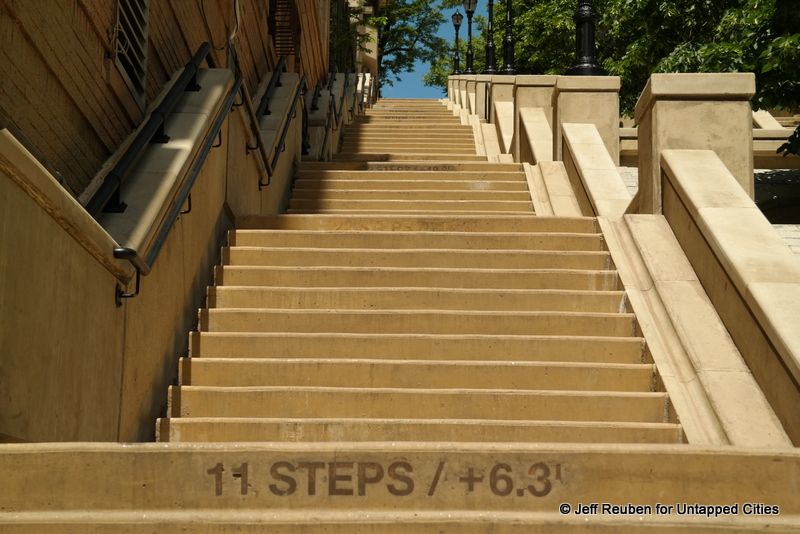
Although little noticed in the rest of New York City, the Harlem River forms a valley of low lying waterfront land with hills further inland. Throughout the Harlem River Valley, there are a number of step streets, which provide pedestrian access along public rights-of-way that are too steep for vehicles. In Inwood, the step street section of W. 215th Street is 200 feet long and rises 63 feet from Broadway up to Park Terrace East.
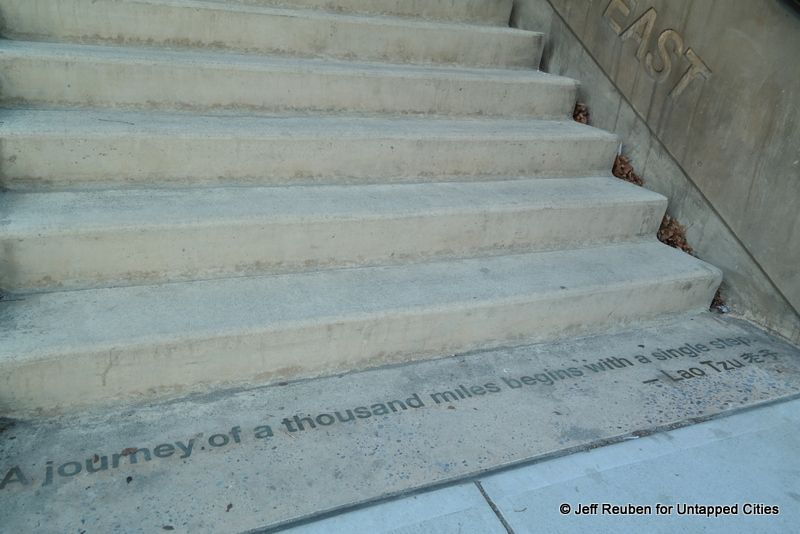
The City recently reconstructed the 215th Street step street and added step-themed quotes from Nelson Mandela and Lao Tzu at the base, to provide a bit of inspiration for those ascending the 110 steps. After every 11 steps there is a landing, with the number of steps and elevation indicated on the top riser. There are also new plantings and seating along the way.
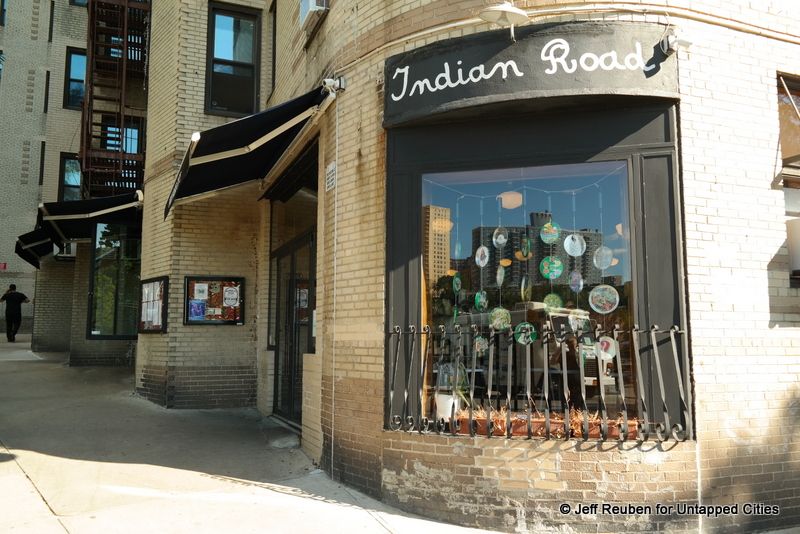
Although billing itself as simply a neighborhood café, Indian Road Café is all that and more. It serves breakfast, lunch, dinner, and weekend brunch menus with farm-to-table options. To pair with the food, it offers a full bar with a varied selection of beer, wine, and spirits. It’s also an all-day coffee bar, opening at 7 AM daily (8 AM on Sundays) and hosts a range of events, including the expected (trivia on Wednesday nights and live music on a regular basis) and the unexpected (knitting club meetings on Tuesdays). It also supports the local arts scene by displaying the works of local artists. The common denominator for Indian Road Cafe’s diverse offerings seems to be community.
Adding to its neighborhood feel, it’s tucked into an Art Deco apartment building at the corner of W. 218th Street and Indian Road, on a residential block facing Inwood Hill Park a stone’s throw from the Columbia University boathouses.
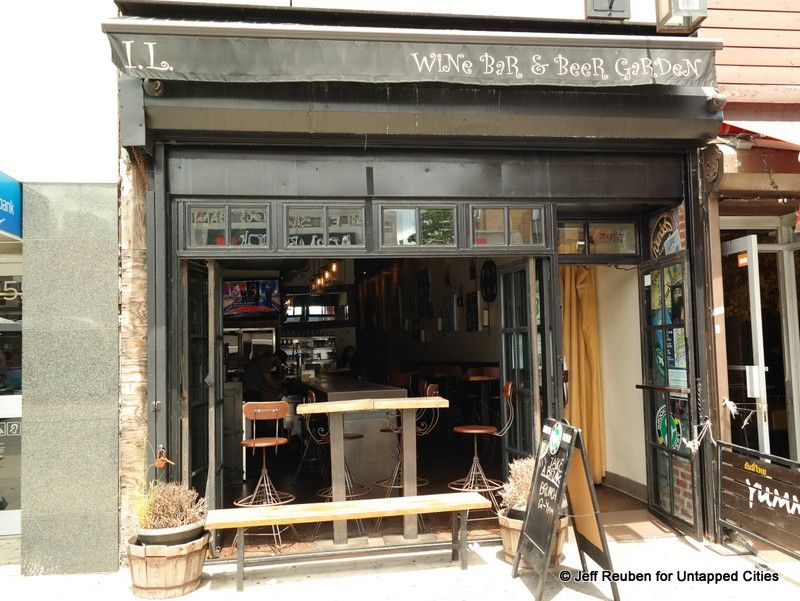
Located on Broadway near the 207th Street subway station, Inwood Local would be another great place to finish up a visit to Inwood. The food and drinks are served with a relaxing, friendly vibe and the place has a cool ambiance of exposed brick, wood, and soft lighting. There’s also a back patio. My favorite is the lamb burger with a side of couscous, but there are lots of good food options. Inwood Local touts itself as a wine bar but it also serves an impressive rotation of craft beers.
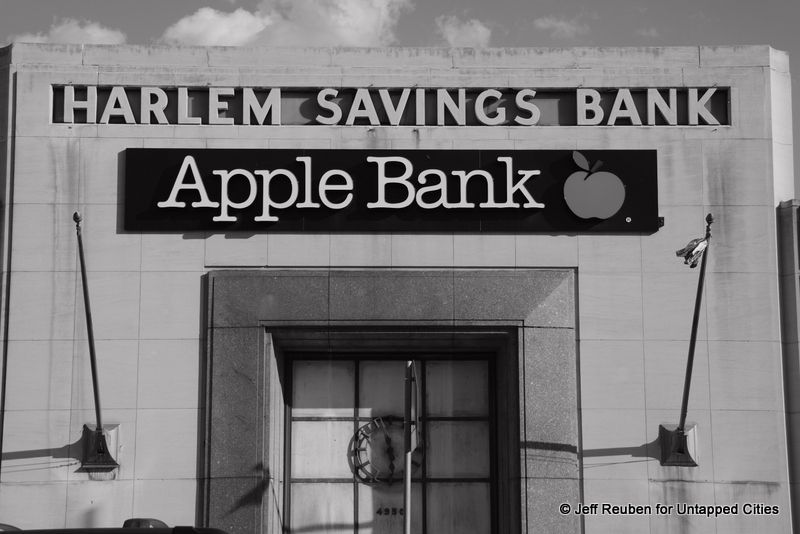
Although Inwood does not have any designated historic districts, it includes a number of notable buildings besides the Dyckmann Farmhouse. For example, the old Harlem Savings Bank branch on Broadway, across the street from Inwood Local, has a simple elegance to its Modernistic design. It was the work of architects Halsey, McCormack and Helmer, who also designed the Ridgewood Savings Bank branch in Forest Hills. Completed about 1948, it is still used by its original occupant, which changed its name to Apple Bank for Savings in 1983. Recently the bank uncovered the lettering of the original name, which for years was covered by a sign.
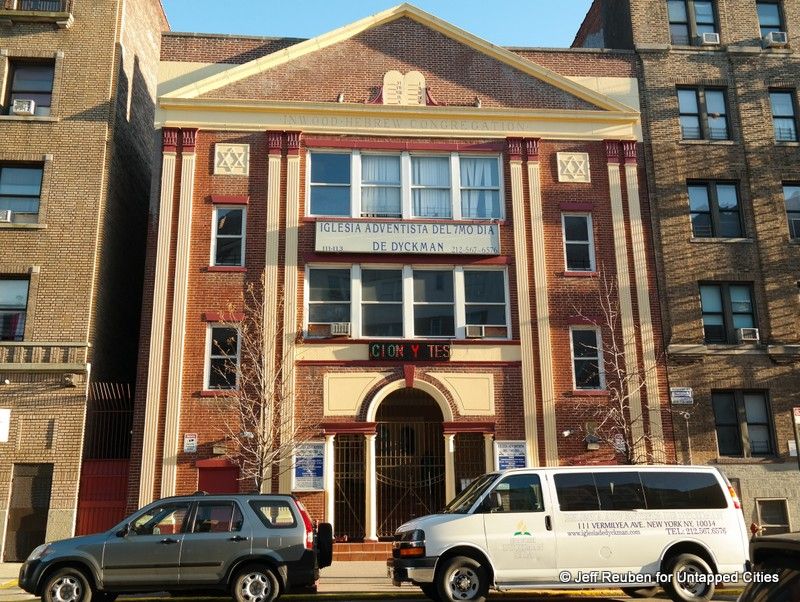
Another notable local building is the former Inwood Hebrew Congregation on Vermilyea Avenue, completed in the mid 1920s. Reflecting changes in neighborhood demographics, it is now home to the Iglesia Adventista del Septimo Dia de Dyckman. It was designed in the Colonial Revival style by brothers George and Edward Blum, who are better known for their outstanding apartment houses.
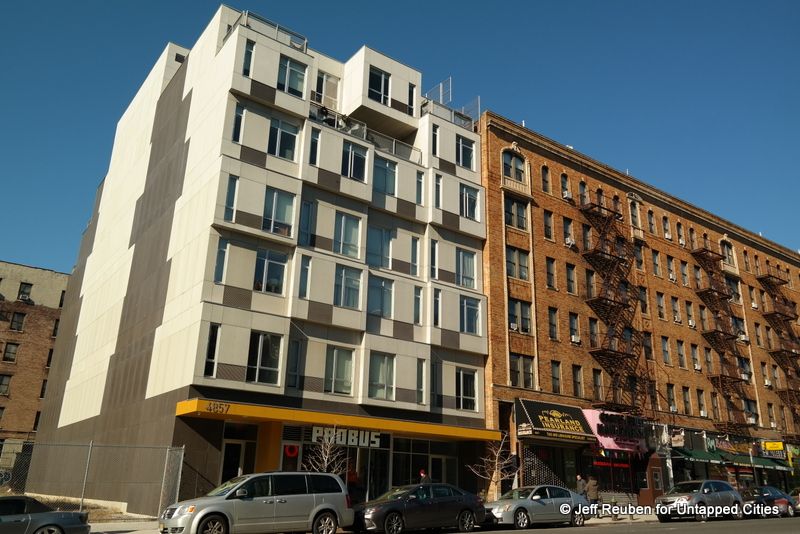
Located next to one of those ubiquitous Inwood pre-war apartment houses, The Stack both fits in and sticks out. Most importantly, it is Manhattan’s first modular apartment building. The building sections were manufactured in a Pennsylvania factory and then, as its name alludes to, assembled on the site. Gluck+ Architects designed it and managed construction. (To see a time-lapse video click here.)
The new type of construction, for NYC, is matched with a post-modern facade that contrasts with the historic styles of its brick clad neighbors. At the same time, at 7 stories it nearly matches the height of the adjoining building and is built up to the street. The Stack, which debuted in 2014, is a mixed-income rental building with 6 of the 28 units affordable housing under the City’s Housing Partnership program.
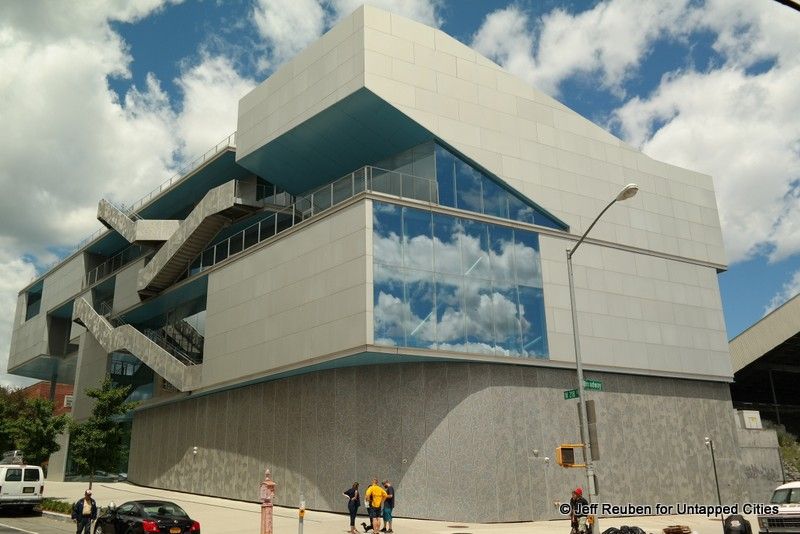
Built in 2012, the Campbell Sports Center, Columbia University’s training center for football players and other student athletes, sits on a hilly corner at Broadway and W. 218th Street, the newest facility in the Baker Athletic Complex. In a review by New York magazine’s Justin Davidson, he observes that architects Steven Holl and Chris McVoy “avoid pinning themselves down to a recognizable style,” as he notes “how neatly it negotiates a tangle of different transitions.”
The surrounding area is an urban smorgasbord including the elevated 1 subway line, bridges, river, athletic fields, and residential, commercial, and industrial buildings. Rather than relate to any one of those surrounding uses fully, its heavily glass and aluminum facade helps to link it to the outside by revealing some of what’s going on inside and equally, allows those inside to see out. Town-gown relations can often be tense, including in NYC, and this facility avoided being a fortress or athletic ivory tower.
Next, check out our archive of NYC Neighborhood Guides and The Top 10 Secrets of NYC’s Inwood Hill Park. Contact the author @Jeff_Reuben
Subscribe to our newsletter